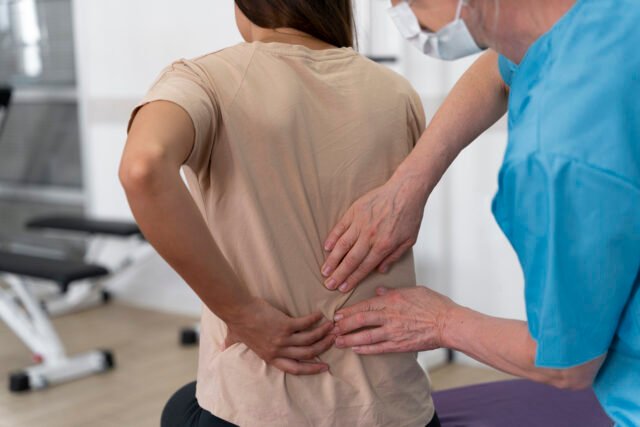A slip disc, also known as a slipped disc, can make even simple activities difficult. From standing too long to bending slightly, the pain can interrupt daily life. Fortunately, many patients recover without the need for surgery. With early diagnosis and a well-structured care plan, non-invasive solutions can help reduce pain and restore function. Here’s an overview of the most effective conservative approaches to slip disc treatment.
Understanding Slip Disc
A slipped disc happens when the inner gel of a spinal disc pushes through its outer shell, pressing on nerves. This pressure can cause pain, tingling, or numbness in the back, arms, or legs. Common causes include wear and tear, injury, or incorrect lifting. In some cases, symptoms remain mild, while in others, they may impact mobility and daily activities.
When Is Non-Surgical Treatment Appropriate?
Non-surgical treatment is often suitable for those without severe nerve damage. Patients with moderate symptoms, no bladder or bowel issues, and preserved strength are usually good candidates. With proper guidance, many individuals can find relief without the need for surgical intervention.
Common Non-Surgical Slip Disc Treatment Options
Several slip disc treatment options are available to help manage symptoms and improve spinal health without requiring surgery.
Physical Therapy and Exercise
Physiotherapy is often the starting point. Gentle exercises and stretches reduce pressure on the disc and improve mobility. Strengthening the back and core muscles offers better support to the spine. With consistency, many patients regain flexibility and return to routine movement.
Medications
Pain-relief medication, such as anti-inflammatory drugs, helps reduce swelling around the affected nerve. In some cases, doctors prescribe muscle relaxants or nerve stabilisers to control symptoms. Medicines are typically part of a broader care plan and are used for a short period.
Lifestyle Modifications
Changing certain habits can protect the spine. This includes maintaining good posture, avoiding heavy lifting, and using proper back support to prevent strain. Managing weight and staying active without overexertion also reduces stress on the lower back and helps prevent further injury.
Alternative Therapies
Complementary treatments, such as acupuncture, massage, or chiropractic adjustments, may help alleviate discomfort. These are best used as add-ons to medical care. Some patients report reduced pain and better function when these therapies are combined with core treatments.
Epidural Steroid Injections
In more persistent cases, doctors may recommend steroid injections near the affected area. These injections aim to reduce inflammation and pain, offering relief that allows further physiotherapy or activity. They are used sparingly and under the supervision of a medical professional.
Benefits and Limitations of Non-Surgical Slip Disc Treatment
Considering the pros and cons helps patients make informed decisions about their recovery path.
Advantages
Non-surgical care eliminates the risks associated with operations. It allows the body to heal naturally and often leads to a faster recovery. Patients can remain active and involved in treatment, which encourages long-term habits that support spinal health.
Challenges and When Surgery May Be Necessary
Not every patient responds to conservative care. If symptoms worsen, such as leg weakness, numbness, or loss of control over bowel or bladder, surgery may be necessary. These signs typically indicate that the nerve is under significant pressure and requires urgent attention.
Tips for Maximising Success with Non-Surgical Slip Disc Treatment
The effectiveness of conservative treatment depends on how well patients stick to their plans.
Consistency in Therapy and Exercises
Skipping sessions or doing exercises incorrectly can delay recovery. Patients who follow instructions regularly tend to experience better outcomes. A steady pace and commitment to the plan are vital for success.
Working Closely with Healthcare Professionals
Staying in touch with doctors and therapists helps track progress. Adjustments may be necessary along the way, and early feedback helps prevent problems from escalating. A team approach ensures a safe and guided recovery.
Monitoring Progress and Adjusting Treatment Plans
Each patient’s journey is different. Regular check-ins help assess what’s working. Plans can be modified as needed, whether that means changing exercises, adjusting medication, or trying another therapy option.
Conclusion
Surgery isn’t always the first answer to a slipped disc. With options like physiotherapy, medication, lifestyle changes, and minor interventions, many patients recover without an operation. These approaches offer relief with less risk and greater flexibility. Individuals experiencing back pain or related symptoms should consider non-invasive treatment options for a slipped disc under the guidance of an expert. With patience, consistency, and the right slip disc treatment, a return to pain-free movement is possible.







